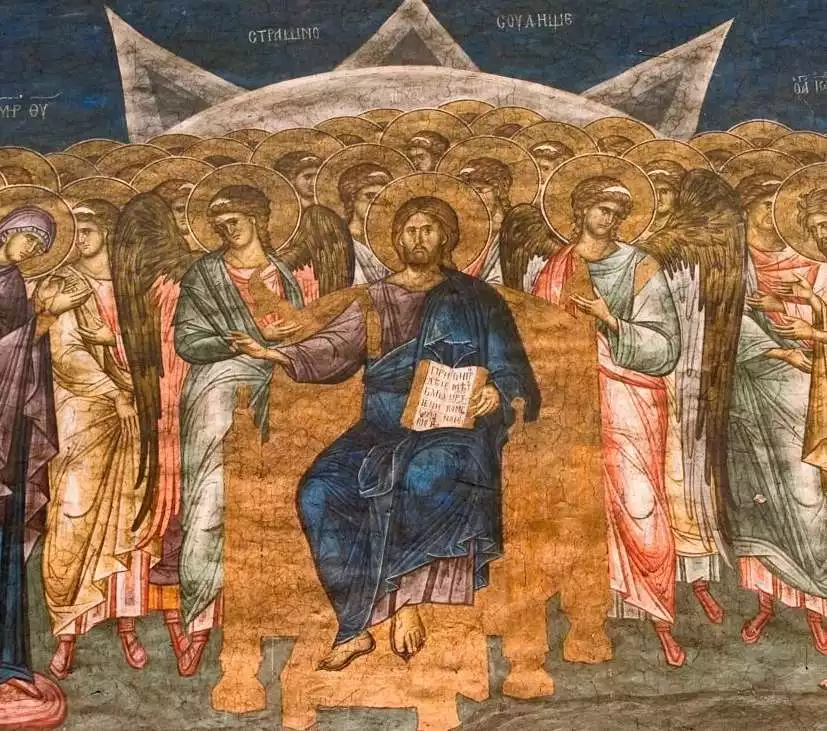
Origins and Historical Context
Doxology, a term deeply embedded in Christian liturgical traditions, stands as a testament to the enduring nature of praise and worship. This liturgical formula, dedicated to exalting God, has traversed centuries, evolving yet retaining its core purpose: the glorification of the divine.
The origins of doxology trace back to early Christian practices, with roots possibly predating the formation of the church. It represents not just a mere utterance of faith but a structured, communal expression of veneration towards God. These formulations, often brief, encapsulate the essence of Christian worship, acknowledging the omnipotence and benevolence of the deity.
In the Bible, the term ‘doxology’ itself does not appear; however, its principles are vividly illustrated. The New Testament, particularly in the writings of Paul, is replete with passages that mirror the spirit of doxology. For instance, Romans 11:36 (“For of him, and through him, and to him, are all things: to whom be glory for ever. Amen.”) and Jude 1:25 (“To the only wise God our Saviour, be glory and majesty, dominion and power, both now and ever. Amen.”) serve as quintessential examples. These scriptures not only reflect doxological elements but also influence the structure and content of later liturgical formulations.
The evolution of doxology in Christian liturgy is a reflection of theological development and cultural influences. Initially, these expressions were spontaneous and varied, but with the establishment of formal church practices, doxologies became more structured. The most familiar form in Western Christianity, known as the “Gloria Patri” (“Glory be to the Father, and to the Son, and to the Holy Spirit”), exemplifies this standardization. It underscores the Trinitarian belief central to Christian doctrine, encapsulating the essence of Christian faith in a succinct yet profound manner.
Moreover, doxologies often serve as concluding remarks in hymns, prayers, and psalms, marking the end of one segment of worship and the transition to another. This placement is not merely functional but symbolic, signifying the perpetual nature of God’s glory and the unending commitment of the faithful to acknowledge it.
Throughout history, doxologies have adapted to various linguistic, cultural, and denominational contexts, illustrating the universality of the Christian experience of divine praise. Whether in the solemn ambiance of a traditional church setting or the vibrant energy of contemporary worship, doxologies remain a pivotal element, bridging generations of believers in a common chorus of reverence and adoration.
In conclusion, doxology, while not explicitly named in the Bible, is deeply rooted in its teachings and principles. Its historical journey from early Christian gatherings to modern-day worship services reflects the enduring nature of praise and the adaptability of liturgical practices in expressing the inexpressible: the glory of God.
The Theological Significance and Usage in Contemporary Worship
The theological underpinnings of doxology extend far beyond its historical origins, permeating various aspects of contemporary Christian worship and theology. The pervasive use of doxology in various liturgical settings underscores its role as a vehicle for expressing theological truths and communal beliefs.
In contemporary worship, doxologies are often integrated into hymns, prayers, and liturgical responses, serving as a bridge between different segments of the service. This integration reflects a deeper theological significance; doxologies are not just expressions of praise but also affirmations of faith. They encapsulate key Christian doctrines, such as the Trinity, the sovereignty of God, and the redemptive work of Christ. In this way, doxologies function as concise creeds, summarizing and reaffirming the core beliefs of the Christian faith.
Furthermore, the communal aspect of doxology in worship cannot be overstated. When congregations recite or sing doxologies together, they engage in a collective act of worship, uniting diverse individuals in a shared expression of devotion. This communal dimension reflects the nature of the church as a body of believers, collectively glorifying God.
The adaptability of doxology to different musical styles and cultural contexts also highlights its relevance in contemporary worship. From traditional choirs to modern praise bands, doxologies are crafted and recast to resonate with various congregations, demonstrating the universal nature of Christian praise.
Doxology, in its essence, is a testament to the enduring nature of Christian worship and the unchanging character of God. From its early Christian origins to its pervasive presence in contemporary worship, doxology remains a vital expression of faith and praise. It bridges the past and the present, serving as a reminder of the communal and theological foundations of the Christian faith. In every utterance of a doxology, believers join a timeless chorus of praise, echoing through the ages.
References
- Core.ac.uk. “Theological Significance of Doxology.” Accessed December 19, 2023.
- Santa Clara University. “Theoglossary: Doxology.” Accessed December 19, 2023.
- Tandfonline.com. “Journal of Pentecostal Theology.” Accessed December 19, 2023.
